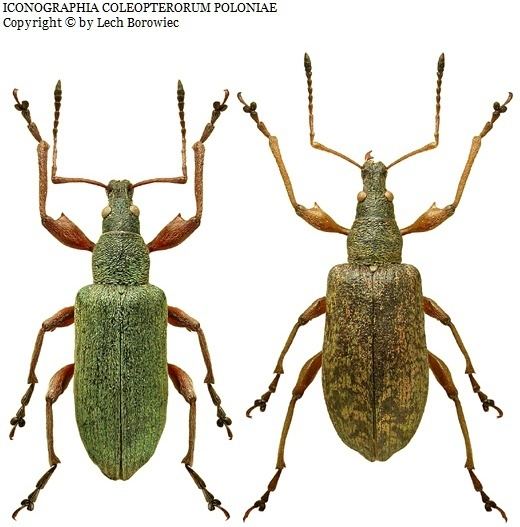Order Coleoptera Subfamily Entiminae Rank Species | ||
 | ||
Similar Phyllobius, Phyllobius argentatus, Phyllobius pomaceus, Phyllobius pyri, Polydrusus marginatus | ||
Phyllobius glaucus is a species of weevil found across Europe, especially in carrs. It is a pest of a variety of fruit trees, but has little economic effect. It was first described by Giovanni Antonio Scopoli in 1763.
Contents
Description
Adults grow to 8–12 millimetres (0.3–0.5 in) long. The body is black, but is covered with elongate, hair-like scales that give the animal a very variable, greenish-brown appearance. The legs are reddish brown.
Distribution
Phyllobius glaucus is common and widespread in Europe. A single specimen of P. glaucus (under the name P. calcaratus) has been recorded from Canada, but this is thought to be an error.
Ecology and life cycle
Phyllobius glaucus is associated with a wide range of trees and shrubs, and is a minor pest of fruit trees, including apples, pears, cherries and plums. The insects chew small holes in the leaves and petals of the trees. It is a typical component of the fauna of alder carr in northwestern Europe.
Taxonomic history
Phyllobius glaucus was first described by Giovanni Antonio Scopoli in his 1763 work Entomologia Carniolica, under the name Curculio glaucus. A second species was later named Curculio glaucus, but has since been renamed to Coniocleonus glaucus. Taxonomic synonyms of Phyllobius glaucus include:
